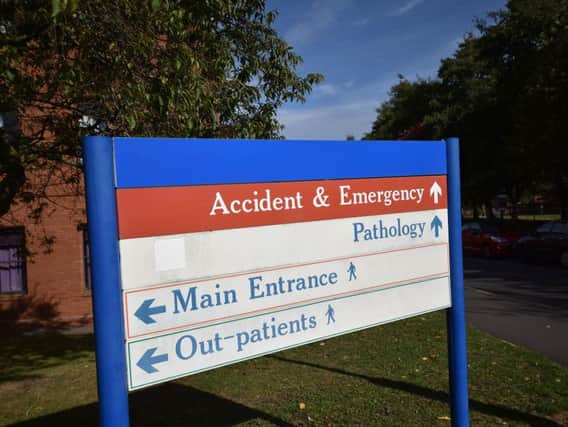Scarborough Hospital review: cost of agency staff and falling number of births among report's findings


These follow a detailed analysis of the existing services, how they work and how they are used, alongside data that looks at how these services may change and develop in future years as the population’s needs change.
Read more: First phase of Scarborough Hospital acute services review is completed
Advertisement
Hide AdAdvertisement
Hide AdThe report highlights that 46% of jobs in Emergency and Acute Medicine are vacant, with locum or temporary staff used to cover roles at “significant” cost.
In 2017/18 an estimated £10.7m was spent on agency staff at Scarborough and Bridlington hospitals, which equates to 11.6% of the total expenditure on staff.
The review also found that 51% of people visiting A&E at Scarborough had “minor” conditions that could have been dealt with by visiting a GP or a pharmacist.
There is some good news for the A&E department though as the trust has recently secured £40m in funding to create a Combined Emergency Assessment Unit.
Advertisement
Hide AdAdvertisement
Hide AdThere were also concerns raised, however, about the falling numbers of births in the town.
The report notes: “Scarborough Hospital is one of the smallest obstetric units in the country delivering 1,400 babies a year, the national average is 3,000.
“Owing to population changes it is expected that the number of babies born at the hospital will decline further over the next seven years.”
The number of babies born in the hospital is predicted to drop by close to 1% a year.
Advertisement
Hide AdAdvertisement
Hide AdOther pressures faced by the hospital include the 5 million or so nights spent in the town by visitors each year, thereby swelling the population of the hospital’s catchment area.
The base catchment area of the hospital is predicted to grow by 0.2% a year and reach 181,000 by 2025, but the number of people aged over 70 is expected to grow by 15% over the same timeframe. At the same time, more than 5,000 new homes are expected to be built in the borough.
The report found that treating some conditions on an outpatient basis could be one option moving forward.
For example, Scarborough Hospital sees more patients admitted for urinary infections, flu and lung disease than other areas in the country, which other centres treat as outpatient conditions.
Advertisement
Hide AdAdvertisement
Hide AdEvidence collected shows that recruitment to the coast continues to be an issue for health chiefs.
The report stated: “In July 2018, there was a 26% consultant vacancy rate at Scarborough Hospital. [In total] 26% of the consultant workforce is over 55 years old.
“There are particular challenges staffing General Surgery and Urology, A&E, and General Medicine, which means there is a reliance on locum staff to ensure there are enough staff to provide safe care.
“In July 2018 there was a 16% vacancy rate for registered nurses.
Advertisement
Hide AdAdvertisement
Hide Ad“Junior doctors don’t always gain the experience they need, for example in Obstetrics and Gynaecology services, less than five in ten trainees say they have gained adequate experience compared to larger centres, which explains why they prefer to work elsewhere.”